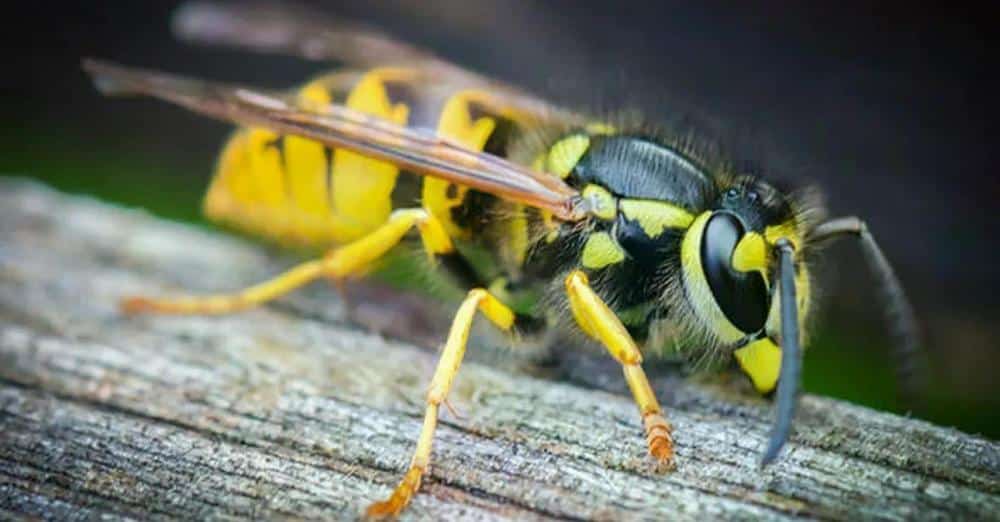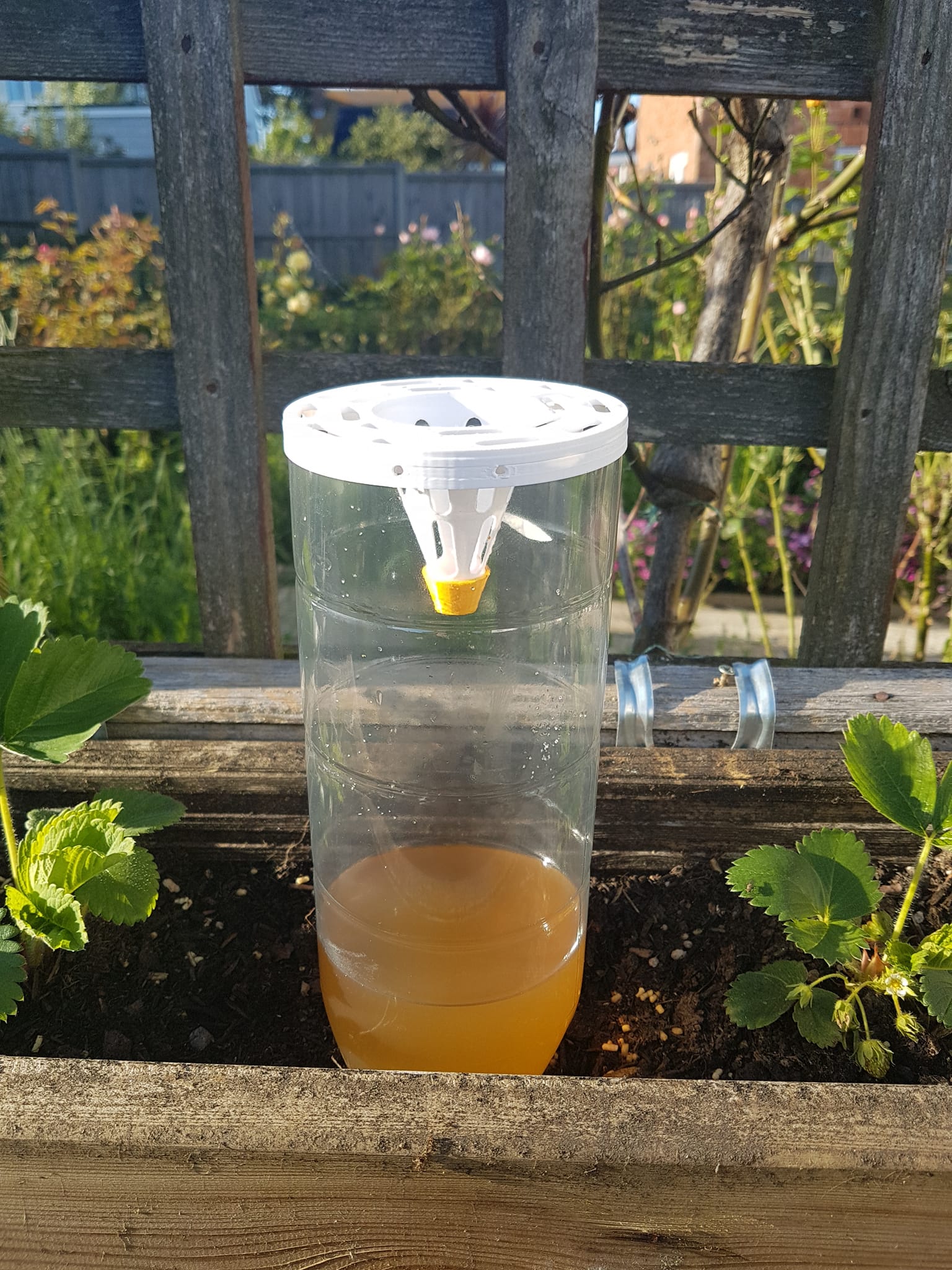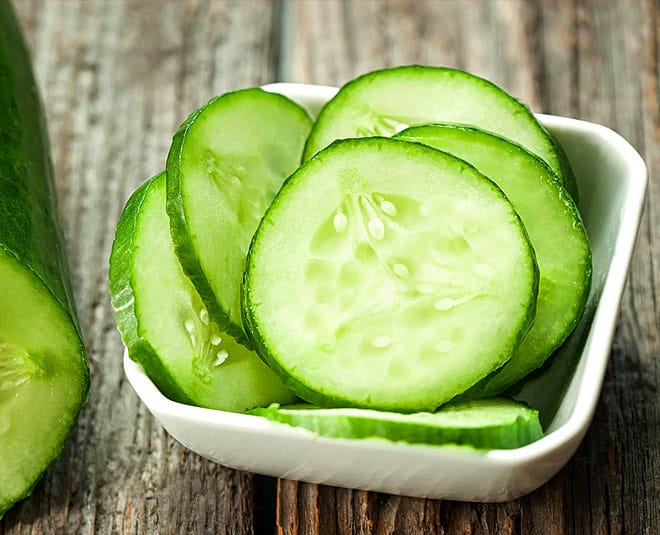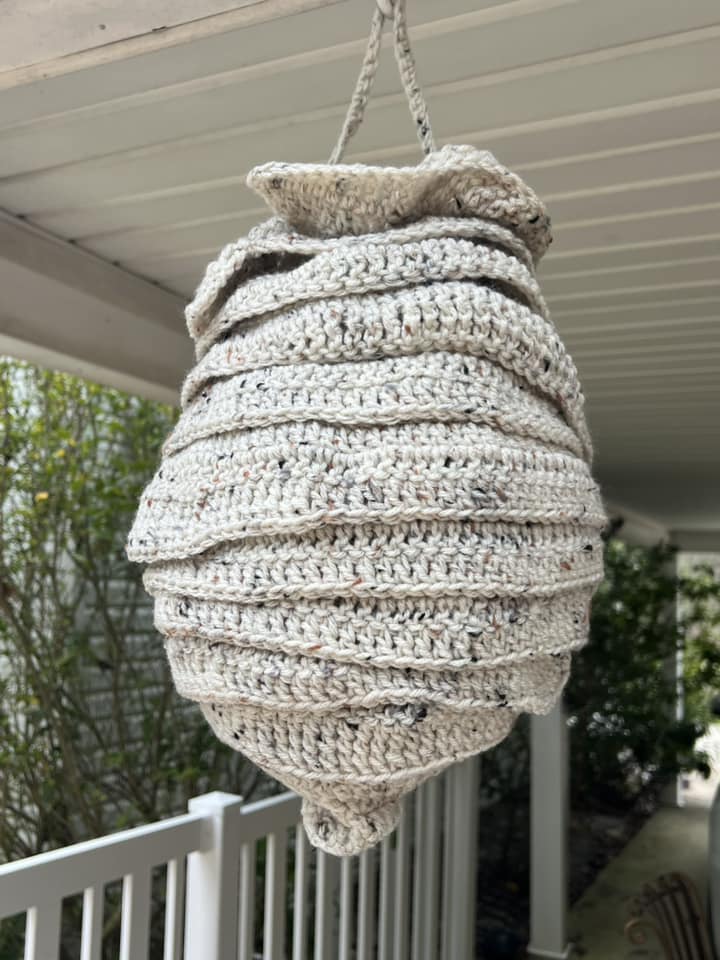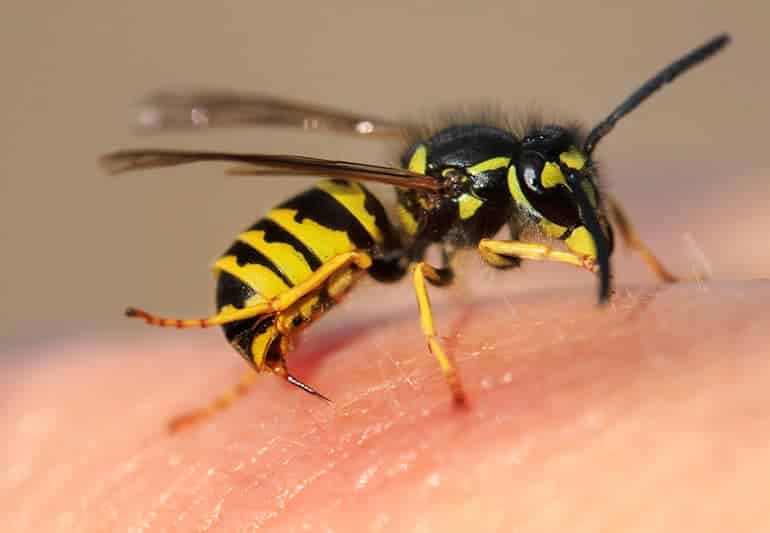Wasps, although beneficial to the ecosystem as they control pest populations and pollinate plants, don’t make them less of a nuisance. These winged pests can disrupt outdoor activities by persistently hovering and buzzing around you and your food.
They can also sting multiple times, especially if they feel threatened, causing localized swelling, redness, and itching. For these reasons, wanting them out of your home is understandable. Fortunately, there are several effective methods to get rid of wasps outside.
This guide covers multiple safe and effective wasp elimination methods.
8 Natural Ways To Get Rid Of Wasp Outside
These natural remedies help eradicate wasps that have invaded your outdoor spaces.
1. Smack The Wasps
It’s a straightforward solution for dealing with wasps and offers immediate results. However, these insects can become aggressive when threatened or disturbed, so swatting at them increases the risk of being stung.
Considering the risks, when is smacking a viable method for killing wasps? If there is a single wasp or a small number of wasps away from the nest. Also, in situations where a wasp poses an immediate threat to you.
If you choose this method,
- Use the right tool. Ideal tools to swat wasps are a fly swatter, a rolled-up magazine or newspaper, or an electric swatter.
- Put on eye protection, pants, gloves, and long-sleeved shirt
- Approach the wasps slowly and calmly
- Aim for a quick, decisive strike
2. Peppermint Oil Spray
The pungent aroma of peppermint oil deters wasps. This solution is simple, effective, and eco-friendly. In a spray bottle or bowl, mix and shake well water, dish soap, and peppermint oil. Spray the solution generously around areas with wasps.
Also, spray the nest’s entrance and surrounding area thoroughly. Consider placing peppermint-soaked cotton balls where wasps frequently visit. Furthermore, consider planting peppermints around your garden.
Note
Lemongrass, geranium, and clove essential oils also repel wasps.
3. Soap and Water
Soapy water solution works by suffocating the wasps. The soap clogs their spiracles, inhibiting their breathing and eventually causing death. Mix water and any standard liquid dish soap in a clean spray bottle and generously spray the wasp nests and other places they frequent.
Read More: How To Kill A Wasp In Your House Without Getting Stung
4. Homemade Wasp Trap
Placing traps around your outdoor spaces will help you capture wasps. You can buy a wasp trap from the store or make your own. Homemade wasp traps lure wasps in with sweet bait and prevent them from escaping, ultimately drowning them.
Use this step-by-step guide to make your wasp trap.
Materials
- A standard 2-liter soda bottle
- Sharp knife or scissors
- Tape or stapler
- String or wire (optional)
- Bait
Instructions
Prepare the Bottle
Wash the plastic bottle and remove any labels for better visibility of the wasps inside. Ensure it’s also dry before proceeding.
Cut the Bottle
Carefully cut off the top third of the bottle using a sharp knife or scissors. Make the cut straight to ensure a good fit when reassembling.
Invert the Top
Remove the bottle cap and invert the top part (place it upside down into the bottle’s bottom part). Doing so creates a funnel that lets wasps inside but makes escaping difficult.
Secure the Trap
Secure the two parts of the bottle together using a tape or stapler, leaving no gaps where wasps can escape.
Add the Bait
Fill the trap’s bottom part with your chosen bait. You can use sugar water, fruit juice, soda, or fermented mixtures such as water, sugar, and vinegar solution.
Use enough bait to drown the wasps but not so full that the liquid touches the inverted top.
Note
Create a loop around the top of the trap with a string or wire if you want to hang the trap.
5. Use Vinegar Trap
In a bowl, combine apple cider vinegar, sugar, and water, then stir the mixture until the sugar is dissolved. Add some drops of dish soap to break the liquid’s surface tension. Position the trap near wasp nests, fruit trees, or other areas with high wasp activity.
6. Cucumber Peels
Wasps find the acidity and bitterness of the cucumber peels unappealing, so you can use them to deter these insects. Get fresh cucumbers with firm, healthy skins, wash them thoroughly to remove any dirt or contaminants, and peel them with a vegetable peeler or knife.
Place the cucumber peels where you have frequently seen wasps or where you want to prevent them from nesting. Common areas include outdoor dining areas, doorways, windowsills, around garbage bins, eaves, and overhangs.
Place the peels in a single layer for maximum surface area exposure.
7. Commercial Wasp Sprays
Making a homemade wasp spray may be cost-effective and gratifying, but buying a commercial wasp spray is a better option in certain situations. These sprays are convenient and perfect for when you need quick and decisive action.
Commercial wasp sprays quickly kill wasps on contact, providing instant relief. Most of them also continue to repel and kill wasps for days or weeks. Moreover, they let you target wasps from a safe distance.
8. Wasp Decoys
Exploit wasps’ territorial behavior to reduce the likelihood of wasp infestations in outdoor spaces. As highly territorial insects, wasps avoid building nests near existing ones. This way, they can reduce competition for resources and lower the risk of conflicts with other colonies.
Hanging wasp decoys at strategic areas such as under eaves, porches, sheds, and near entry points will trick wasps into believing the area is already occupied. You can buy commercial decoys or create your own using simple materials such as paper bags or balloons and paper mache.
Hang your wasp decoys around 6-10 feet high, which is the height at which wasps typically place their nests. In addition, make sure the decoys are visible but sheltered from the elements.
Prevention Strategies
Keeping wasps from nesting on your property is the finest approach to dealing with these insects. Below are some effective prevention strategies.
a) Cover Food
Sugary substances and protein-rich foods draw in wasps to places. Minimize their interest in your home by covering your food when dining outdoors. Wrap individual food items or smaller portions securely in foil or plastic wrap.
Also, consider investing in food tents or mesh covers made for outdoor dining and use lids or covers when serving food buffet-style. Moreover, promptly clean any foods and drinks you spill and discard food scraps in sealed trash bins with tight-fitting lids.
b) Seal Entry Points
Inspect for gaps, openings, and cracks around your home where wasps could enter and seal them to deprive them of ways to access your home. Besides denying entry, sealing cracks and holes keeps wasps from constructing their nests in these crevices.
c) Secure Garbage Cans
The smell of food waste attracts wasps. Avoid this by tightly closing your garbage bins, washing them regularly, and emptying them regularly, especially if they contain food waste or other attractive items.
d) Trim Vegetation
Keeping the vegetation in your home in check prevents wasps from building their nests on your property. Trim bushes, shrubs, and trees seasonally, remove dead or dying vegetation, and clear leaf litter, mulch, or other debris.
Wasps often build nests in protected areas near buildings, such as eaves and gutters. Therefore, trim back vegetation close to structures like the home and garage.
e) Plant Wasp-Repelling Plants
Some plants have the ability to deter wasps. These include lemongrass, thyme, wormwood, citronella grass, bay leaves, basil, geraniums, marigolds, pennyroyals, and eucalyptus.
Plant them strategically, especially where you’ve seen wasps. Ideal spots include near outdoor dining areas, entryways to your home, or around eaves and windows.
While some plants naturally repel wasps, some attract them. Avoid plants like yarrow, Queen Anne’s lace, and sweet fennel.
When To Seek Professional Help
Sometimes, seeking professional help is advisable when dealing with wasps. These situations include:
i) Large Infestation
It is better to let a professional handle your wasp problem if these insects invade your home in large numbers. Dealing with many wasps increases your risk of getting stung many times. Also, a large infestation is more aggressive than just a few wasps.
ii) Nest Location
Are the wasp nests located in places that make eliminating them challenging? If so, consider calling a professional. These areas include hard-to-reach areas like high eaves and roofs and close to your doors, windows, or walkways.
Underground nests of ground-dwelling wasps, like yellow jackets, are also hard to tackle. Disturbing these nests can provoke the wasps, causing them to emerge in large numbers and attack.
iii) Allergies
Wasp stings are extremely painful, even for someone who isn’t allergic to them. The situation worsens if one has a known allergy to wasp stings. Wasp stings can trigger severe allergic reactions, including anaphylaxis.
iv) Repeated Infestation
If you’ve tried to deal with wasps yourself and the problem keeps recurring, it may indicate an underlying issue that requires professional intervention to resolve completely.
Summary
With diligence and proper methods, you can effectively manage and eliminate wasps in your outdoor spaces, allowing you to enjoy your home without fear. Before escalating to professional solutions, try natural solutions and commercial sprays and traps first. Also, prevention is essential, so focus on keeping your environment clean and unappealing to wasps.

I’m Mike Hyle, an exterminator with 7+ years of experience handling all sorts of pests, including mice, cockroaches, bed bugs, and termites. I also write for Pest Solutions DIY blog to share my knowledge and help homeowners keep their homes pest-free. Outside work, I enjoy hunting, snowshoeing, and exploring nature. Check out my blog for helpful pest control tips!

